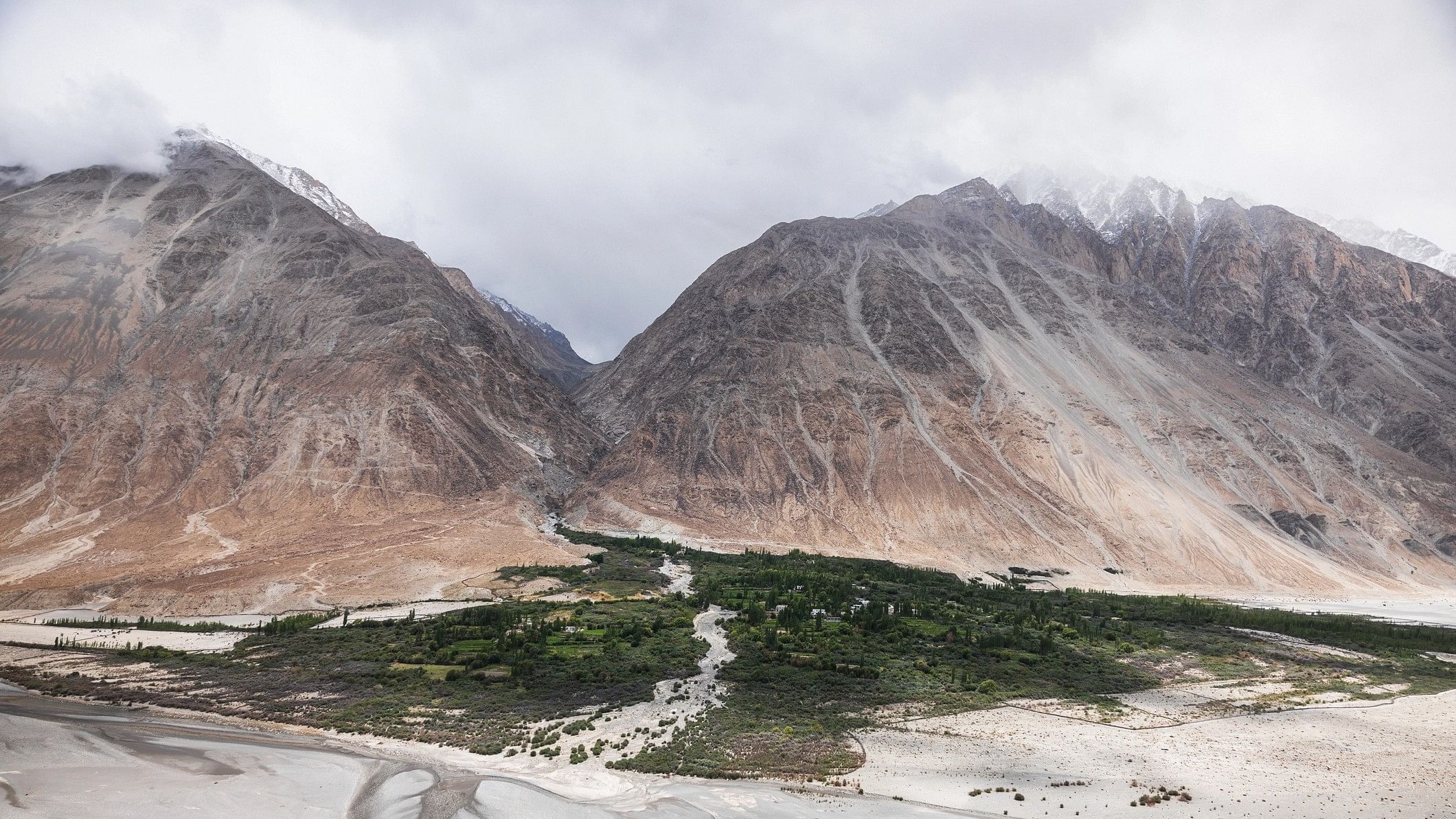
A view of the forsts and mountains of Kashmir.
Credit: iStock Photo
Srinagar: Forests of Jammu and Kashmir have been declared highly vulnerable to the effects unpredictable weather patterns, early springs, and above-average temperatures, which experts have attributed to climate change and global warming.
Kashmir is located between two Himalayan ranges — the Karakoram on the Afghanistan side and the Hindukush on the Indian side - and both regions are experiencing the impact of climate change and global warming.
Jammu and Kashmir has a total forest cover of 20.23 lakh hectares, accounting for 19.95 per cent of the total geographical area of 10,1387 sq km. The fast track developmental projects are being seen as one of the major reasons for the stress on ecology and also one of the major threats to it.
According to an official document, unregulated grazing and fragile ecosystems of the Himalayas are some of the other major threats to the ecology and forests of J&K. “UT of J&K is highly vulnerable to Climate Change and fast track development projects on infrastructure are causing stress on ecology,” an official document reveals.
The document also states that the low CAPEX-plan budget, inadequate mobility to frontline staff, and lack of required infrastructure for forest protection are some of the issues the forest department is facing.
“Forests are also impacted by the activities and functions of different departments like revenue, tourism, sheep and animal husbandry, agriculture, horticulture, industry, Jal Shakti and Public Works,” the document reads.
Aijaz Rasool, an environmentalist, attributes the rise in temperature in the Himalayan region to climate change and global warming.
“In September this year, Kashmir recorded its second hottest day for that month in 132 years, when the temperature rose to 34.2 degrees Celsius on September 12. Average temperatures in September are typically between 24 and 28 degrees Celsius,” he said, adding that glaciers are melting, rivers and streams are drying up, and water reservoirs are getting depleted.
Kashmir’s evergreen coniferous forests and snow-covered peaks have a direct bearing on the region’s agriculture, energy and tourism sectors. Kashmir’s forests have faced acute devastation during the last 30+ years of turmoil. An unmonitored construction boom amidst the political turmoil has led to a significant loss of forest cover.
The effects of degradation of forests are already visible in drying up of perennial water sources at many places, accelerated soil erosion, flash floods, silting up of reservoirs, loss of biodiversity, and reduced forest productivity.